The VBA run-time error ‘1004’: “Unable to get the PivotFields property of the PivotTable class” is one of the most common errors when automating Pivot Tables. This error occurs when your code tries to manipulate a field that Excel cannot find or when it cannot correctly identify the Pivot Table itself.
In this article, we will walk you through three causes of this error and provide the exact VBA code solution for each scenario.
To solve the “Unable to get the PivotFields property of the PivotTable class” error, here is one simple solution by verifying the field name in VBA.
➤ Click Developer > Visual Basic.
➤ Open a module, insert the following VBA code, and run it.
Sub Fix_WrongFieldName()
Dim pt As PivotTable
Set pt = Worksheets("Pivot 1").PivotTables("PivotTable1")
pt.PivotFields("Product").Orientation = xlRowField
MsgBox "Fixed: Correct PivotField name applied successfully."
End Sub➤ After running the code with the proper field name, you will not get the error anymore.
Using a Field Name That Doesn’t Exist
One of the most common reasons for this error is an incorrect field name in your VBA code. When you use the line pt.PivotFields(“FieldName”), Excel looks for a column header in your source data that exactly matches “FieldName”. If the “FieldName” does not match your Pivot Table column header, it will return an error. If the header is “Product” but you write “Productxx“, the code will fail with the ‘1004’ error.
Suppose we have a dataset of some product sales, and the data is converted into a table. Now, we will create a Pivot Table using this table and first apply the incorrect code to display the error. Then, we will use the correct code to resolve the error.
➤ Select the table, go to Insert > PivotTable.
The PivotTable will be created, where the worksheet is named ‘Pivot 1‘ and the PivotTable is named ‘PivotTable1‘.
The Problematic Code:
➤ Go to Developer and click Visual Basic.
➤ To open a new module, click Insert > Module.
➤ Insert the code below and hit Run.
Sub Wrong_FieldName()
Dim pt As PivotTable
Set pt = Worksheets("Pivot 1").PivotTables("PivotTable1")
pt.PivotFields("Productxx").Orientation = xlRowField
End SubIn the following example, we attempt to set the orientation of a field named “Productxx“, which does not exist in our source data. Thus, we get the “Unable to get the PivotFields property of the PivotTable class” error.
Fix: Correct the Field Name
To fix this, simply correct the field name in the PivotFields property to match the actual column header in your source data, which is “Product“.
➤ Insert a module, paste the code below, and hit Run.
Sub Fix_WrongFieldName()
Dim pt As PivotTable
Set pt = Worksheets("Pivot 1").PivotTables("PivotTable1")
pt.PivotFields("Product").Orientation = xlRowField
MsgBox "Fixed: Correct PivotField name applied successfully."
End SubAs a result, running the corrected macro will now execute successfully, setting the ‘Product‘ field as a row field.
Using the Wrong PivotTable Reference
If you insert an incorrect PivotTable name or worksheet name for the PivotTable you want to work with, you will get the same error. To solve this, make sure the macro code consists of a proper PivotTable and worksheet name.
The Problematic Code:
In this code, our PivotTable is named “PivotTable1“, but when we use “PivotTableX” in the code, we get the error message.
➤ Open a module, paste the code, and hit Run.
Sub Wrong_PivotTableName()
Dim pt As PivotTable
Set pt = Worksheets("Pivot 1").PivotTables("PivotTableX")
pt.PivotFields("Product").Orientation = xlRowField
End SubThus, we get the error message as the pt object indicates a non-existent Pivot Table.
Fix: Correct the PivotTable Name
The solution is to correct the Pivot Table name that is set for the Pivot Table you are working with.
➤ Insert a module, put the following code, and press F5 or the Run icon.
Sub Fix_WrongPivotTableName()
Dim pt As PivotTable
Set pt = Worksheets("Pivot 1").PivotTables("PivotTable1")
pt.PivotFields("Product").Orientation = xlRowField
MsgBox "Fixed: Correct PivotTable reference applied successfully."
End SubA message box will appear, ignoring the error, and correctly identify the Pivot Table and apply the field setting.
Selecting a Cell Outside the PivotTable
If your VBA code relies on the ActiveCell.PivotTable property, the code will fail if you click anywhere outside the boundaries of the Pivot Table before running the macro. The ActiveCell then belongs to the Range class, which does not have a PivotTable property.
The Problematic Code:
When your chosen cell is outside the Pivot Table area (e.g., in cell B100), the following code will generate an error.
➤ Open a module, put the following code, and press F5 or the Run icon.
Sub Wrong_ActiveCellReference()
ActiveCell.PivotTable.PivotFields("Product").Orientation = xlRowField
End SubAs a result, the error message box will appear as the active cell is not part of the Pivot Table.
Fix: Reference the Pivot Table Object Directly
To solve this, you should never rely on ActiveCell when manipulating Pivot Tables. The best practice is to declare and set a PivotTable object directly, using the sheet and name references.
➤ Create a new module, write the following code, and press F5 or the Run icon.
Sub Fix_ActiveCellOutsidePivot()
Dim pt As PivotTable
Set pt = Worksheets("Pivot 1").PivotTables("PivotTable1")
pt.PivotFields("Product").Orientation = xlRowField
MsgBox "Fixed: PivotField accessed directly without relying on ActiveCell."
End SubFinally, we will get a message box confirming that the code is running properly. By referencing the Pivot Table directly, the code will run successfully every time, regardless of where the cursor is placed on the sheet.
Frequently Asked Questions
Does the timing of PivotTable creation affect this error?
Absolutely. If you try to access PivotFields immediately after creating a PivotTable, the PivotCache may not be ready. Adding a small delay or separating the creation and modification steps helps.
How can I debug this error quickly?
Step through your VBA code using F8 and check values for PivotTable names, field names, and ranges in the Immediate Window (Ctrl+G). This usually pinpoints the exact issue.
Is this error specific to the PivotTable Class only?
No. A similar error can also happen with the Worksheet or Range class if you mistakenly use them with PivotFields. But for the PivotTable class, it directly indicates a problem with field referencing.
Concluding Words
Above, we have explored three common reasons behind the “Unable to Get the PivotFields Property of the PivotTable Class” error in VBA. While using a non-existent field name is the most frequent cause, an incorrect PivotTable reference or selecting a cell outside the PivotTable can also trigger this error. By carefully checking these points, you can easily troubleshoot and fix the issue. If you have any further questions, feel free to let us know in the comments section below.

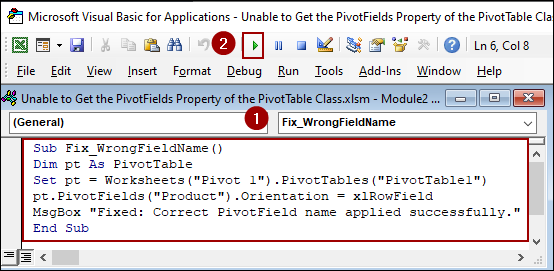
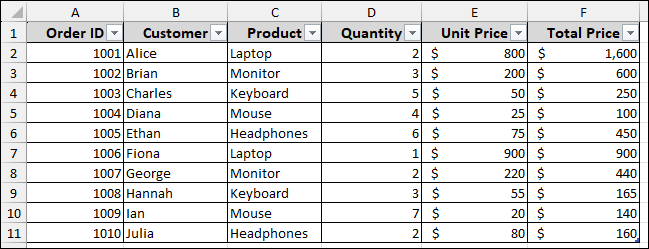
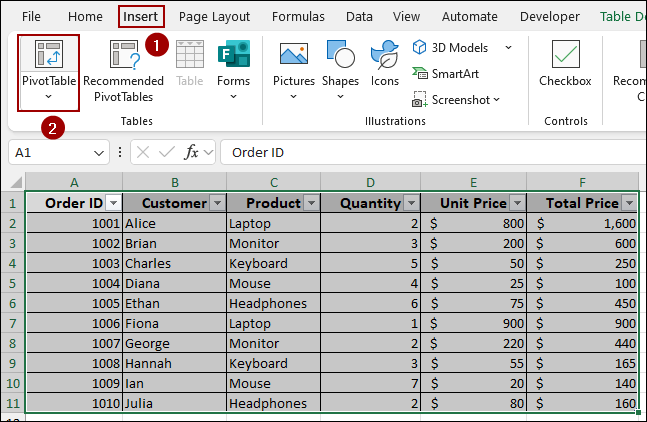
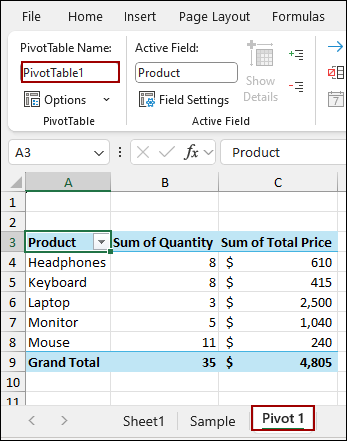
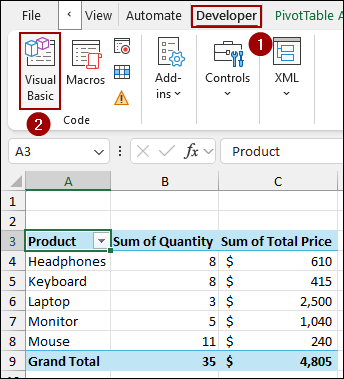
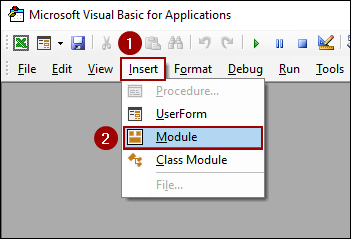


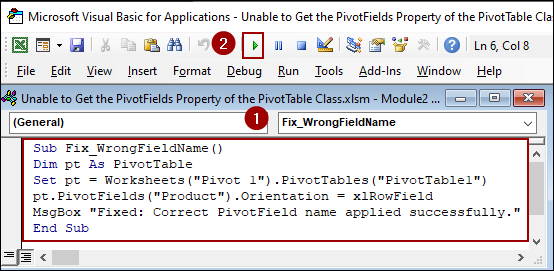
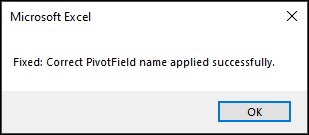

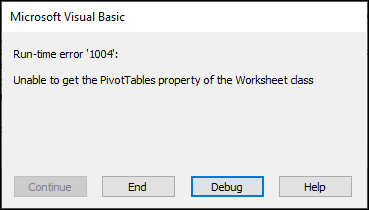

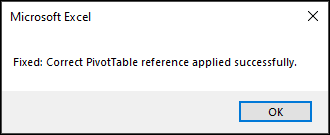

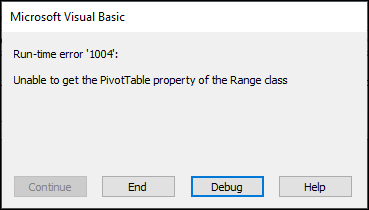

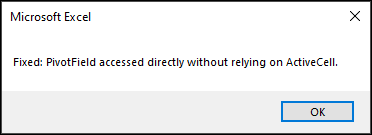
![[Solved] Unable to Get the PivotFields Property of PivotTable Class](https://excelinsider.com/wp-content/uploads/thumbs_dir/featured-image-conditional-formatting-pivot-table-rdzz0le031ql3cqh8tg0d7rcxmmh9nrbfuhcndzf3w.webp)
![[Solved] Unable to Get the PivotFields Property of PivotTable Class](https://excelinsider.com/wp-content/uploads/thumbs_dir/featured-image-how-to-group-columns-in-pivot-table-re1yiabb1exgecaxot6j1947pf806k50afvsp7y058.webp)